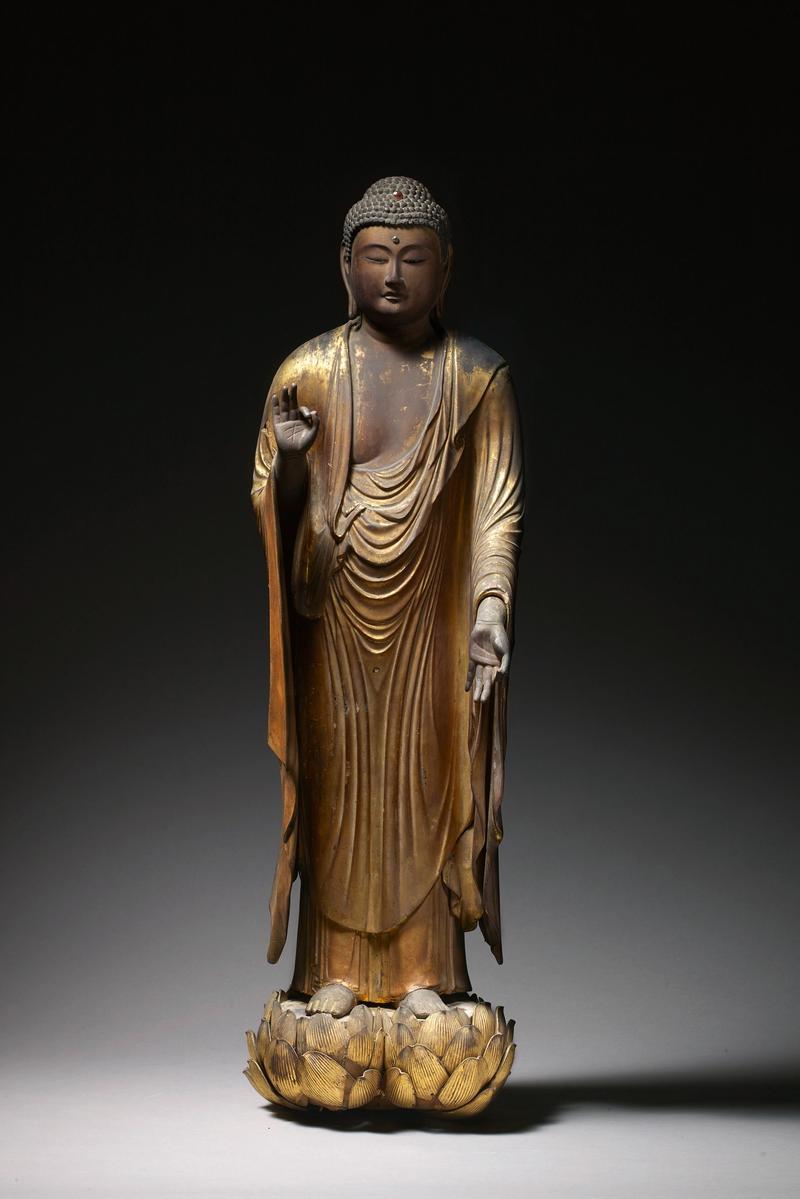Four Buddhist wood panels from a tengai (temple canopy) painted in ink, colour and gold with Tennyo (heavenly maidens) amongst clouds, each playing a musical instrument or holding flowers.
Japan, 16th/17th century, Momoyama/Edo period.
Tennyo, also called hiten, are the heavenly maidens / celestial beings often depicted in Buddhist art. They are believed to reside in and fly over the pure lands and praise Buddha by playing musical instruments, scattering flowers and burning incense. They are usually depicted as elegant, beautiful figures on temple ceilings and walls near the Buddha image.
Tengai is a coffered ceiling or a canopy hung from the temple ceiling above a Buddhist statue or sometimes an abbot’s seat. It is said to be originally derived from parasols used by Indian nobles – they were highly decorated and treated as a symbol of authority, which was then adopted in Buddhist architecture. Tengai, mostly made of wood or metal in Japan, are generally highly ornamented and their shapes vary; they can be square, rectangular, hexagonal, octagonal and circular shapes. The present panels once composed a square canopy.
Comparable depiction of tennyo can be found on the canopy of Toji temple, Kyoto, (9th century, Heian period, National Treasure). See Tokyo National Museum ed., National Treasures of To-ji Temple: Kukai and the Sculpture Mandala, (exhibition catalogue, 2019), p. 118, no. 57.).
One of the best known examples of a canopy with heavenly beings (bosatsu on clouds) are housed at the Byodo-in Temple in Kyoto, (11th century, Heian period, National Treasure), which can be found on their website (https://www.byodoin.or.jp/en/learn/sculpture/).
Buddhist Art

A kakemono with the monk Hōnen

A kakebotoke

Zenkoji Kannon Bosatsu

Buddhist wood panels

A wood figure of Amida Nyorai, Heian/Kamakura period

Kakebotoke of Bishamonten

Dainichi Nyorai

Amida Buddha

Daiarakan (Sacred Arhat)

Jizō Bosatsu

Amida Buddha

A silk kakemono with Kannon

An iron nyoi

Zushi with Kannon

A bronze kakebotoke of Kannon













